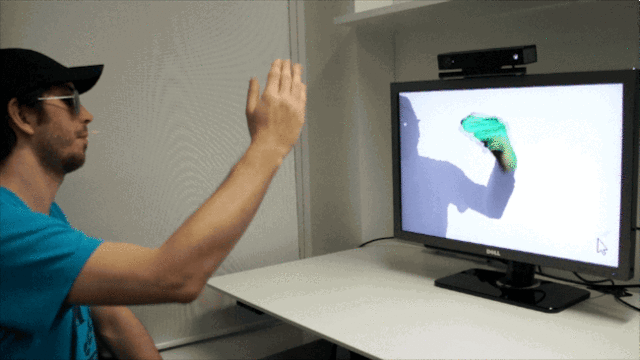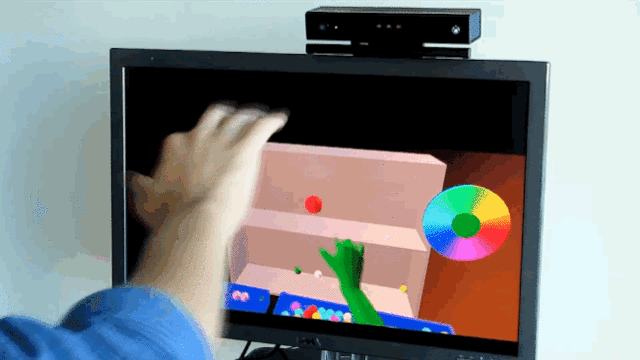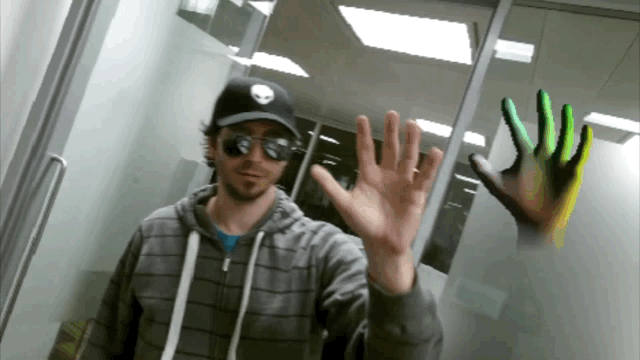Microsoft Invents a greater strategy to feel Hand Gestures
Handpose promises the holy grail of movement detection: quick, correct hand attractiveness.
April 23, 2015
think about strapping on a virtual fact headset, then using your palms to select up a sword and swing it around your head. imagine a hazard workforce ready to defuse a complicated bomb from a mile away, just through controlling a robotic’s hand as easily as your personal. imagine painting a picture to your laptop simply by way of waving a brush in front of your screen. Or, when you desire, imagine the usage of a pc like in Minority file, whisking away pages and recordsdata just via grabbing them with your palms.
Handpose, a brand new innovation by means of Microsoft research, could make all that possible, giving computers the flexibility to adequately and entirely track the ideal motion of your palms via a Microsoft Kinect, proper down to the finger wiggle. whereas no longer the first challenge to make development in this space—a jump motion 2 hooked as much as an Oculus Rift can already do this—Microsoft’s software innovation guarantees to be quicker, and it can work from as a long way away as across the room, on existing hardware or, eventually, on cellphones.

using the Handpose tool, the first thing a person does is scan his or her hand via conserving it up in front of the Kinect to create a 3-D model. in the lab, the method currently takes a couple of 2d, which is lower than it takes an iPhone contact id sensor to thoroughly measure your fingerprint. as soon as the gadget has created a three-D adaptation of your hand, Handpose allows you to keep an eye on it on the screen in real-time, at around 30 frames per second. From there, you should use the on-reveal hand as if it used to be a doppelganger of your individual.
The Microsoft Kinect used to be quite excellent at detecting your body gestures from the start, says Andrew Fitzgibbon, main researcher within the machine studying and notion crew at Microsoft analysis Cambridge. that includes the movement of your legs, your head, and your palms. however one area where the Kinect and other motion and depth-sensing devices are rubbish is figuring out what you’re doing together with your palms.

“it may well inform roughly where your palm and wrist is, however which is it,” Fitzgibbon tells me. At best possible, it could tell if you’re waving at it, but can’t even do one thing so simple as observe if you’re doing a thumbs up or thumbs down. “We imagine that if you might want to competently monitor the positions of a person’s hands, right all the way down to the attitude of every knuckle and every digit, we consider motion-sensing know-how would supply rise to a complete new class of person interface.” Fitzgibbon calls this new category of UI an immediate physical Interface: one where customers may interact with virtual objects just by way of reaching out and grabbing them as if it were physical.
the issue is awfully complicated. Fitzgibbon says that for any movement-monitoring gadget with the intention to identify what the hand is doing, it needs to be able to observe 30 different points on the human hand. that does not sound like much, but how these 30 completely different points move together spawns trillions of conceivable combos. To brute drive the calculation would take an “infinite” quantity of computing power, says Fitzgibbon, and that is the reason ignoring the fact that the Microsoft Kinect can not in fact see all of your fingers, as a result of lots of them are hidden from the sensor all over certain gestures (as an example, crossing your fingers, or folding your folding your arms). So even inaccurate hand gesture recognition is brutally gradual.

What Handpose’s algorithm does is vastly pace up a pc’s skill to properly recognize hand gestures, up to 10 times faster. It does this by way of using what Fitzgibbon calls particle swarm optimization, an algorithm that reduces the Kinect’s trillions of preliminary guesses about where your hand is right into a pool of 200 probably guesses. that’s then further refined until it finds a excellent sufficient in shape.
Fitzgibbon reckons the variation between existing hand-acceptance methods and what Handpose can do is the variation between the use of Graffiti on Palm OS again within the mid-’90s (primarily, a symbolic language of crude gestures that didn’t actually mimic what it is like to write down with a pen) and modern handwriting reputation techniques, which is able to be aware cursive, calligraphy, and extra.
Fitzgibbon is cautious to note that Handpose is not ready for retail, yet. He says Handpose it will likely be just right sufficient for totally correct hand gesture recognition when it is twice as quick as it is now. When that happens, he says, predict it to vary our interactions with the whole thing from computers, video games, digital truth, tv sets, and robots.
And as for when to be able to be? “i believe it was invoice Gates who as soon as stated that you simply overestimate what you are able to do in a 12 months, and underestimate what you can do in 10,” Fitzgibbon laughs. “So shall we embrace someplace in the center, maybe five.”
[All Images: Microsoft Research]
quick company , read Full Story
.fc-widget
margin: zero auto;
width: 250px;
padding: 20px zero;
#awards-enter-button
cursor: pointer;
font-dimension: 14px;
textual content-become: uppercase;
font-weight: 700;
font-domestic: ‘MuseoSans’;
history: none;
border: none;
background-colour: #91b93e;
coloration: white;
padding: 13px 20px;
#awards-enter-button:hover
history-coloration: #6F8734;
#awards-enter-button a
border-bottom: none;
coloration: white;
(257)













